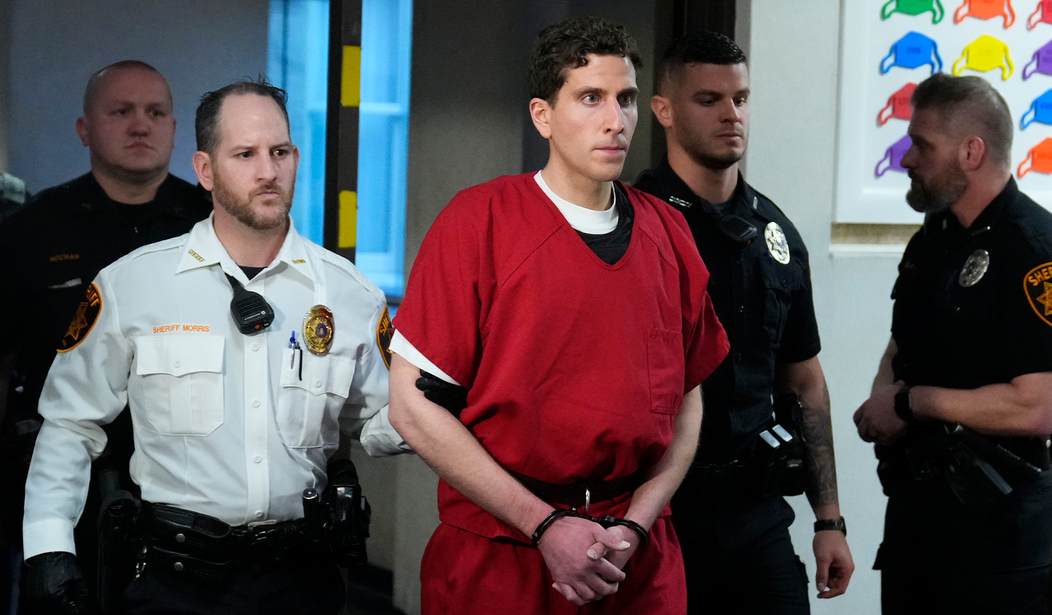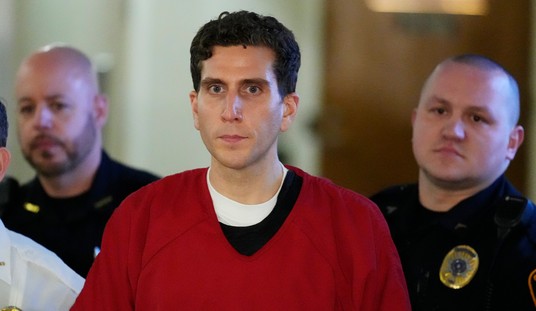The brutal murders at the University of Idaho last year shocked the nation, not least because of how these four people were killed, but how the killer could commit this vicious crime and get away with it initially. The victims, Madison Mogen, Kaylee Goncalves, Xana Kernodle, and Ethan Chapin, were killed in the early morning hours on November 13. They all had been stabbed to death in their rooms on the second and third floors of the house. Chapin and Kernodle were in a relationship and were found dead in the latter’s room; Goncalves and Mogen were in the latter’s room. All the women were roommates, along with two other girls. The initial reports were that these murders occurred without the other roommates knowing, which added a bizarre and creepy element to the crimes.
New reports show that at least one of the roommates who was unharmed was awakened by a commotion in Chapin and Kernodle’s room and even caught a glimpse of the killer before he exited the home, paralyzing her with fear. We don’t know if the killer saw the roommate; she had been peering out from her bedroom door. A car description was provided, allowing investigators to follow a solid lead on a suspect:
The affidavit also explains how authorities keyed in on a white Hyundai Elantra as "Suspect Vehicle 1" after retrieving video footage from roadways around the crime scene and seeing a white sedan eventually identified as an Elantra traveling in atypical patterns compared with normal traffic in the area. They also had footage of the vehicle departing the immediate area around the crime scene and later arriving in nearby Pullman, Washington, on the campus of Washington State University.
In the course of their investigation, authorities put out a BOLO for a White Elantra, which turned up a vehicle matching the description with Pennsylvania license plates registered to Bryan Kohberger, who had an address that matched with the final location of the vehicle tracked on cameras across state lines from the crime scene in Moscow.
When authorities looked up the vehicle owner's license, Kohberger's ID photo on file and physical attributes consistent with the description given by roommate D.M.
The Elantra and its license plate were subsequently picked up by scanners in Loma, Colorado, and Hancock County, Indiana while the murder investigation continued, eventually being seen on surveillance footage in Albrightsville, Pennsylvania, with a white male matching Kohberger's description behind the wheel.
Subsequently, investigators located Kohberger's family home in Albrightsville and recovered trash from his family's residence in order to obtain DNA profiles.
Authorities' investigation brought more scrutiny for Kohberger, and several warrants querying cell data from Kohberger's phone were used to trace the phone's — and logically Kohberger's — movements leading up to and on the day the murders occurred.
The data showed that Kohberger's phone was connected to "cellular resources" consistent with him leaving his residence in Pullman, Washington, at 2:47 a.m. and then stop reporting to the network — which happens when a phone loses service, is placed in airplane mode, or is turned off. The next time the phone connected to the network, it was using resources that cover an area south of Moscow, Idaho, at 4:48 a.m. and continuing along a track that led back to Pullman.
Recommended
Police were correct to assume that the killer was no longer in the area. The FBI was brought in to assist in the investigation, and no new leads occurred for weeks. It wasn’t until December 30 that Bryan Christopher Kohberger, 28, was arrested for the crimes. A trove of evidence linked Kohberger, a graduate student at Washington State University, to the crime scene, including DNA evidence from the knife sheath, video footage, and cellular data. Kohberger was studying to earn his doctorate in criminology. Washington State University is just across the state line, a mere 10 miles from the University of Idaho campus. A new search warrant was executed at Kohberger’s apartment, where more potential evidence was found (via NBC News):
A pillow with a "reddish/brown stain." A "collection of dark red spotting." A disposable glove. At least a dozen strands of hair.
Those are just some of the items that investigators seized from the apartment of Bryan Kohberger, 28, the former doctoral student charged with killing four University of Idaho students, according to a search warrant released Wednesday.
The warrant was served Dec. 30, the day Kohberger was arrested at his family home in Pennsylvania.
Included in the items taken from Kohberger's apartment in Pullman, Washington, according to the warrant, were a stained mattress cover, a computer tower, various receipts, the dust container from a "Bissell Power Force" vacuum cleaner, a "Fire TV" stick with a cord and plug and what's described as one "possible animal hair strand."
The other hair samples aren't specifically identified as human in the warrant, signed by Washington State University Assistant Police Chief Dawn Daniels. Nor does the document divulge whether any had been tested.
Investigators have said it is likely that the person who killed the four students would have been spattered by blood in the aftermath of the Nov. 13 massacre in the small college town of Moscow, Idaho.
Kohberger was extradited to Idaho on January 5, having waived his rights at a hearing. He faces four counts of first-degree murder.






















Join the conversation as a VIP Member